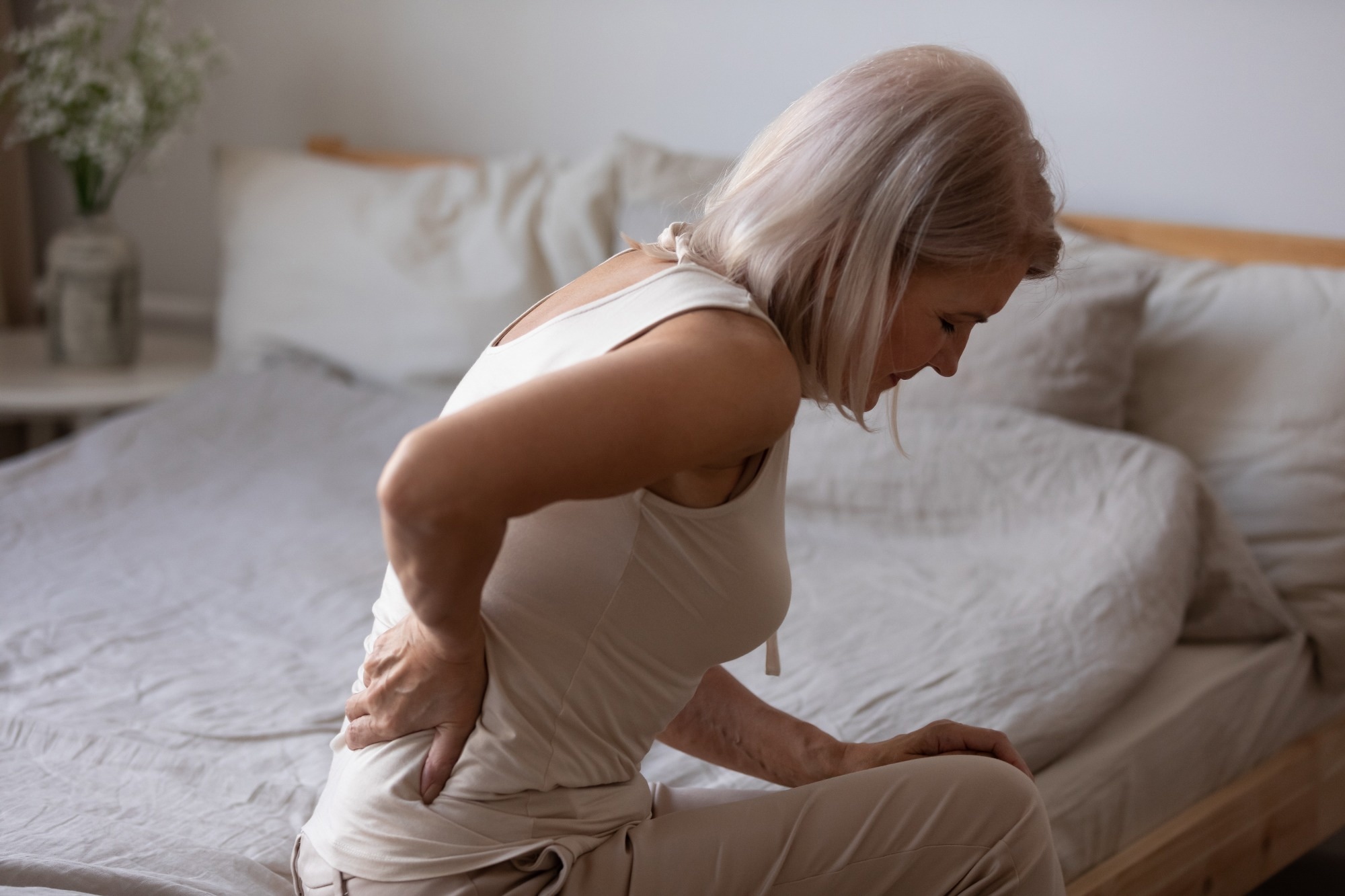In a latest article revealed in , researchers decided whether or not sufferers with newly recognized osteoporosis acquired delayed pharmacologic remedy because of the coronavirus illness 2019 (COVID-19) pandemic.
Research: . Picture Credit score: fizkes/Shutterstock/com
Background
Almost 10 million people (≥50 years outdated) in the US (US) have osteoporosis, with an estimated annual financial burden of $17.9 billion, which makes it an enormous monetary burden on public healthcare companies.
Osteoporosis is a systemic skeletal dysfunction characterised by diminishing bone mineral density (BMD) and bone structure.
Regardless of developments in osteoporosis prognosis and administration, a care hole exists as many osteoporosis sufferers stay untreated or undertreated, particularly males.
Earlier research have demonstrated delayed screening and undertreatment of sufferers with osteoporosis, particularly males, which is difficult for healthcare suppliers because the variety of fragility fractures in susceptible individuals continues to rise.
A single-center observational examine within the US confirmed a drastically decrease screening fee (5.4% vs. 94.5%) and elevated prevalence of fractures and secondary osteoporosis, 50% vs. 31% and 66.67% vs. 20.83%, respectively, in males versus females.
The COVID-19 pandemic additional hindered the care of sufferers with osteoporosis. Accordingly, a survey examine by Fuggle et al. discovered appreciable delays in dual-energy x-ray absorptiometry (DXA) scanning, an increase in appointments, and restricted availability of osteoporosis medication in the course of the pandemic.
In regards to the examine
Within the current examine, researchers evaluated sufferers ≥50 years outdated who underwent DXA scanning at a tertiary middle between March 1, 2018, and January 31, 2022, to quantitatively measure remedy fee and time to remedy for newly recognized osteoporosis sufferers of comparable age, intercourse, and ethnicity throughout pre- vs. pandemic instances.
Sufferers recognized with osteoporosis between March 1, 2018 and January 31, 2020, and March 1, 2020 and January 31, 2022, comprised the pre-pandemic and pandemic cohorts, respectively.
5 medical college students on this analysis examine reviewed all participant’s medical information between March 10, 2022, and Could 25, 2022. They used the World Well being Group (WHO) standards of a BMD T-score of ≤-2.5 on a DXA scan to determine a brand new prognosis of osteoporosis.
The workforce assessed the proportion of sufferers who acquired pharmacologic remedy at three and 6 months of osteoporosis prognosis, i.e., the time of DXA scan and the imply time from prognosis to remedy initiation.
Particularly, the researchers assessed whether or not docs used bisphosphonate, denosumab, parathyroid hormone analogs, and estrogen agonist/antagonist medication for osteoporosis remedy.
Outcomes
A complete of 1,189 sufferers have been newly recognized with osteoporosis in the course of the examine interval, with 576 and 613 sufferers within the pre-pandemic and pandemic cohorts, respectively.
The examine cohorts didn’t differ in age (69.3 vs. 68.8 years), gender (87 vs. 86.1% feminine), or ethnicity, though the variety of White sufferers within the pre-pandemic cohort was larger (74.3 vs. 68.4%).
Furthermore, sufferers handled at three and 6 months have been comparable between the pre-and COVID-19 pandemic cohorts.
According to a examine from North Carolina, this examine reported the impact of racial variations on osteoporosis remedy. Accordingly, physicians provided steering and remedy to extra white girls than black girls.
Nevertheless, amongst different races, White vs. non-White and Hispanic vs. non-Hispanic, the osteoporosis remedy charges remained comparable. Total, the osteoporosis remedy charges have been low (<45%) amongst all sufferers included on this examine, even when stratified based mostly on gender.
A earlier examine estimated a pointy decline (>50%) in the usage of oral bisphosphonates within the US from 2008 to 2012 because of rising considerations about its security.
But, per present examine outcomes, bisphosphonates stay probably the most prescribed treatment within the pre-pandemic and pandemic cohorts (89% vs. 82.1%).
Conclusions
In response to the authors, this is among the first retrospective research to check the influence of the COVID-19 pandemic on the initiation of pharmacologic remedy of sufferers newly recognized with osteoporosis within the US.
They discovered that the COVID-19 pandemic didn’t markedly have an effect on osteoporosis remedy charges; accordingly, 40.5% of sufferers with newly recognized osteoporosis acquired pharmacological remedy inside six months of prognosis.
Future research ought to determine patient-, care provider-, and healthcare system-specific components contributing to the effectiveness of osteoporosis remedy charges within the US, particularly for sufferers newly recognized with osteoporosis.
